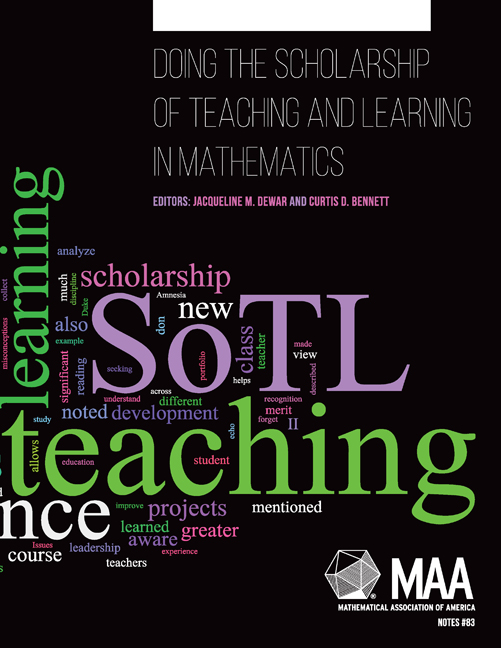9 - Investigating How Students' Linking Historical Events to Developments in Mathematics Changed Engagement in a History of Mathematics Course
from Theme 1: - Experiments with Approaches to Teaching
Summary
Editors' Commentary
The author of this chapter, Pam Crawford, holds a doctorate in mathematics with a concentration in teaching collegiate mathematics. The dissertation she wrote gave her experience in conducting research in undergraduate mathematics education (RUME). More recently, she participated in her university's SoTL scholars program, undertaking an investigation prompted by frustrations encountered repeatedly when teaching a history of mathematics course. The mathematics majors in the course were reluctant to engage in historical thinking. She tried an intervention and describes how her study of its effect is an example of SoTL (and not RUME) work, thereby illuminating some of the distinctions between the two.
Introduction
How often, when thinking about a course you teach, have you wondered what would be the outcome on student learning if you changed some aspect? After making a change, how do you investigate whether or not it improved student understanding and performance? What follows is my tale of researching a change I made in my teaching in a History of Mathematics course.
I hold a Ph.D. in mathematics with a concentration in teaching collegiate mathematics from Western Michigan University. The degree gives me a background in Research in Undergraduate Mathematics Education (RUME), in which researchers apply standard educational research techniques to investigate “the nature of mathematical thinking, teaching, and learning” and try “to use such understandings to improve mathematics instruction” at the collegiate level (Schoenfeld, 2000, p. 641). RUME is an acknowledged research discipline in mathematics with established research procedures and terminology. Scholarship of Teaching and Learning (SoTL), as defined in Chapter 1, is “the intellectual work that faculty members do when they use their disciplinary knowledge … to investigate a question about their students' learning (and their own teaching), submit their findings to peer review, and make them public for others in the academy to build upon.” Clearly SoTL and RUME are related by their concern with investigating student learning. My mathematics education training and my experience with SoTL allow me to comment on their similarities and differences.
Information
- Type
- Chapter
- Information
- Publisher: Mathematical Association of AmericaPrint publication year: 2014
